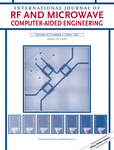Multilayer thin film based optically transparent dual-band automotive windshield antenna
Funding information: DST SERB, Grant/Award Number: EMR/2017/001521; SSN Educational and Charitable Trust
Abstract
An optically transparent dual-band antenna operates at Long Term Evolution (LTE), WiFi, Wireless Local Area Network (WLAN), and Vehicle to Everything (V2X) communications in the automotive environment. The proposed antenna is a coplanar waveguide fed pentagonal patch with a connected ground configuration. The antenna is developed on a soda-lime glass coated with two layers of conductive oxides, viz. fluorine tin oxide (FTO) and indium tin oxide (ITO). The dual-layer conductive oxide is chosen to reduce the sheet resistance to 4 Ω/sq thereby improving the antenna radiation properties. The proposed antenna has a footprint of 50 × 50 mm2. The prototype antenna is designed to operate at 1.5–3 GHz in the lower band and 4.3–7 GHz in the upper band with a percentage bandwidth of 61% and 47%, respectively. The prototype antenna is fabricated and the measured optical transmittance is greater than 72%. The antenna has measured peak gain of 0.6 and 2.7 dBi at lower and upper bands respectively. Furthermore, the on-car performance of the antenna is estimated and presented using both simulation and measurement. The study inferred that the proposed antenna is suitable for deployment on the windshield of automobiles.
Open Research
DATA AVAILABILITY STATEMENT
Data sharing is not applicable to this article as no new data were created or analyzed in this study.




